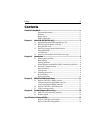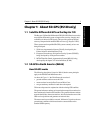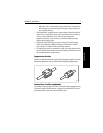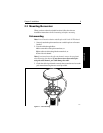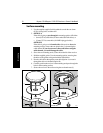
Chapter 1: About SD-GPS (RS120 only) 1
1 About SD-GPS (RS120 only)
Chapter 1: About SD-GPS (RS120 only)
1.1 Satellite Differential GPS on the Raystar 120
The Raystar 120 Satellite Differential GPS (SD-GPS) Receiver uses the
new satellite differential system to improve the accuracy, integrity and
availability of the basic GPS signals. This provides greater positional
accuracy compared with standard GPS receivers (e.g. Raystar 112LP).
Three separate and compatible SD-GPS systems currently exist or are
being developed:
1. Wide Area Augmentation System (WAAS), developed by the
Federal Aviation Administration (FAA).
2. European Geostationary Navigation Overlay System (EGNOS),
being developed by a European consortium.
3. MTSAT Satellite-Based Augmentation System (MSAS), being
developed by the Japan Civil Aviation Bureau (JCAB).
1.2 SD-GPS in North America (WAAS)
How SD-GPS works
The following description is based on WAAS, but the same principles
apply to the EGNOS and MSAS networks.
As shown in Figure 1-1, the WAAS network consists of:
• ground reference stations across the USA
• master stations located at East Coast and West Coast
• two geostationary satellites located above the equator
This network operates in conjunction with the existing GPS satellites.
The ground reference stations are located at known positions and receive
data continuously from the GPS satellites. The ground reference stations
transmit their data to the master stations, which calculate the error of the
GPS-received positions and generate correctional data.
The master stations send their corrected ‘differential’ signals to the two
geostationary satellites which broadcast the corrected data on the
standard GPS frequency.





